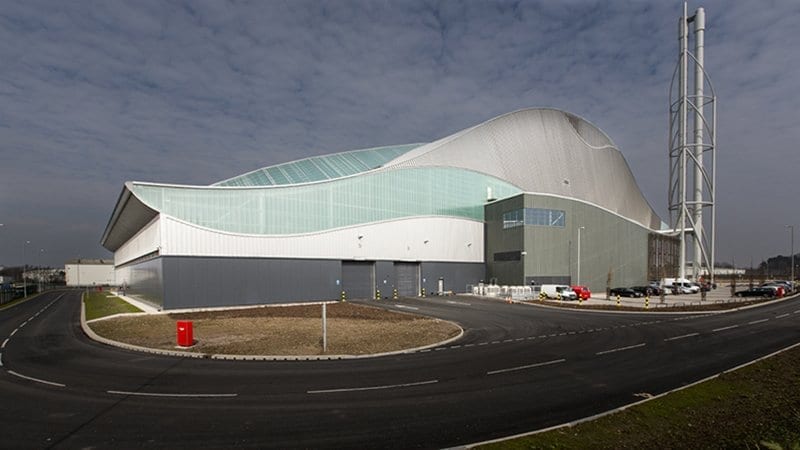Cardiff and Bridgend have been confirmed as the homes of new Welsh heat network projects, which will help to heat homes using excess heat produced at industrial sites.
Lesley Griffiths, Welsh Government Minister for Environment, Energy and Rural Affairs, has approved funding of £8.6m for the Cardiff Heat Network, the first large-scale city heat network of its kind in Wales.

The zero-interest loan will provide more than half of the funds needed for Cardiff City Council to develop phase one of the Cardiff City Heat Network, which which will use underground pipes to transport waste heat from the Viridor Energy Recovery Facility, to buildings in and around the Cardiff Bay area.
The strategic aim is to expand the network into the centre of the city in future phases. The terms of Welsh Government’s loan include incentives for expansion of the heat network to achieve the strategic aim and deliver further decarbonisation of heat in Cardiff.
Supporting the development of the heat network is a small, but important step to decarbonise the heat of Wales’ urban areas and contribute to Welsh Government’s commitment to deliver a decarbonised Wales by 2050.
Extracting heat from the existing Energy Recover Facility, which diverts tonnes of residual waste away from landfill every day, will reduce the local reliance on higher carbon forms of heat and will save thousands of tonnes of carbon each year.
Welsh Government has worked closely with Cardiff City Council since 2017, to support the development of the project. Phase one is expected to be operational in 2022.
As well as the loan from Welsh Government, the first phase of the work is also supported with £6.6m construction grant from the UK Government via the Department for Business, Energy, Industry and Strategy (BEIS).
BEIS has also today confirmed funding for the Bridgend Heat Network, which has also been supported by the Welsh Government’s Energy Service and the Energy Systems Catapult, helping to develop Bridgend Council’s smart systems and heat strategy.
Also referred to as district heating, heat networks distribute heat in water pipes from a central source, and can make use of the excess waste heat generated at industrial sites by distributing the heat to consumers.
A number of priority areas for district heat networks have been identified in Wales by the Welsh Government, including Bridgend and Cardiff.
Lesley Griffiths, the Minister for Environment, Energy and Rural Affairs, said: “I am very pleased to be able to announce confirmation of the funding to the first phase of the Cardiff City Heat Network.
“As we continue on our path to cutting carbon emissions across Wales, one of the key problems we have face is decarbonising heat, which we can tackle by making our buildings more energy efficient, and also by changing the source of heat. As such, using waste heat in town and city centres is of great importance. .
“Heat networks such as these will help home and business owners to cut their energy bills – but it will also help us to meet our goal of cutting Wales’ greenhouse gas emissions.”
The Minister added: “These projects are just two of a number we are happy to support through our Welsh Government Energy Service, to make sure homes and businesses have access to clean, affordable heat.”
Cllr Michael Michael, Cardiff City Council’s Cabinet Member for Clean Streets and the Environment, said: “This is an exciting opportunity for Cardiff to develop new low-carbon, energy infrastructure, fueled by an existing facility in the city.
“Analysis shows that if all the heat available from the plant is fully utilised, we could save 5,600 tonnes of carbon each year and the customers signed up to the network could save on average 5% on their current energy costs.
“The business case shows that the first phase of the network is financially viable and I would like to thank both the Welsh Government and Central Government for their financial assistance with this project.”
The start of work on the heat networks takes place against the backdrop of the Welsh Government’s environmental commitments to lessen the nation’s use of conventional fossil fuels, and cut down on carbon emissions and other greenhouse gases.
These commitments include The Environment (Wales) Act 2016, which requires the Welsh Government to cut the emission of greenhouse gases in Wales by at least 80% by 2050. However, in early 2021, the Welsh Government is committed to increasing the decarbonisation ambition, and will regulate for at least a 95% reduction in carbon emissions by 2050, compared to the 1990 baseline.
